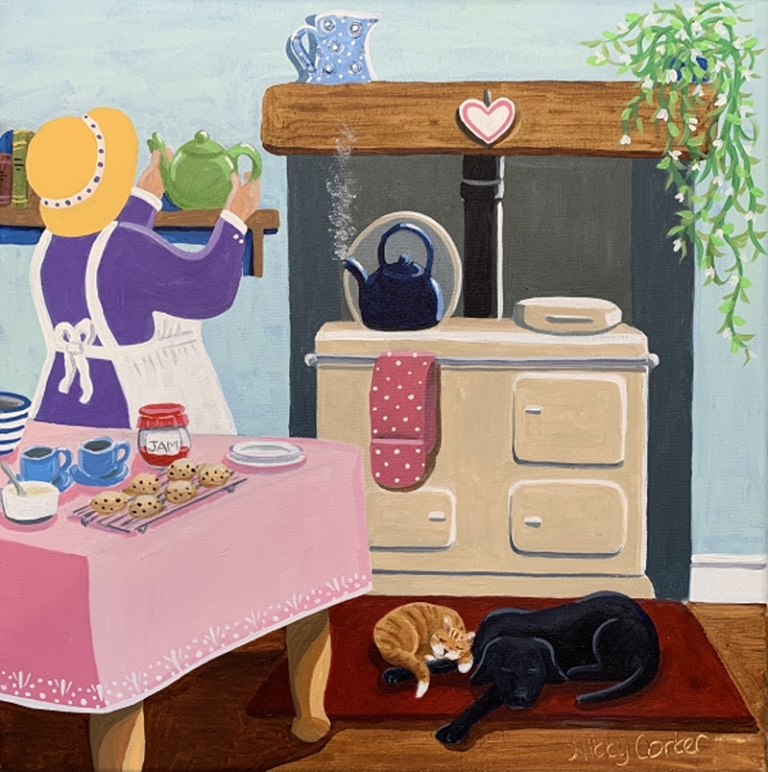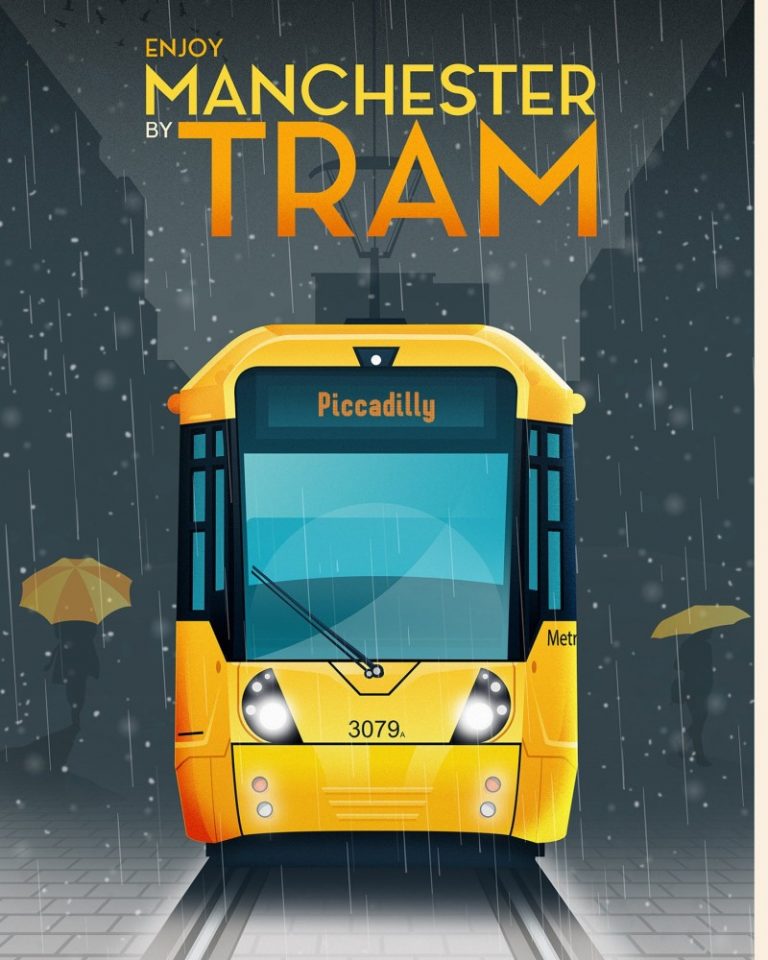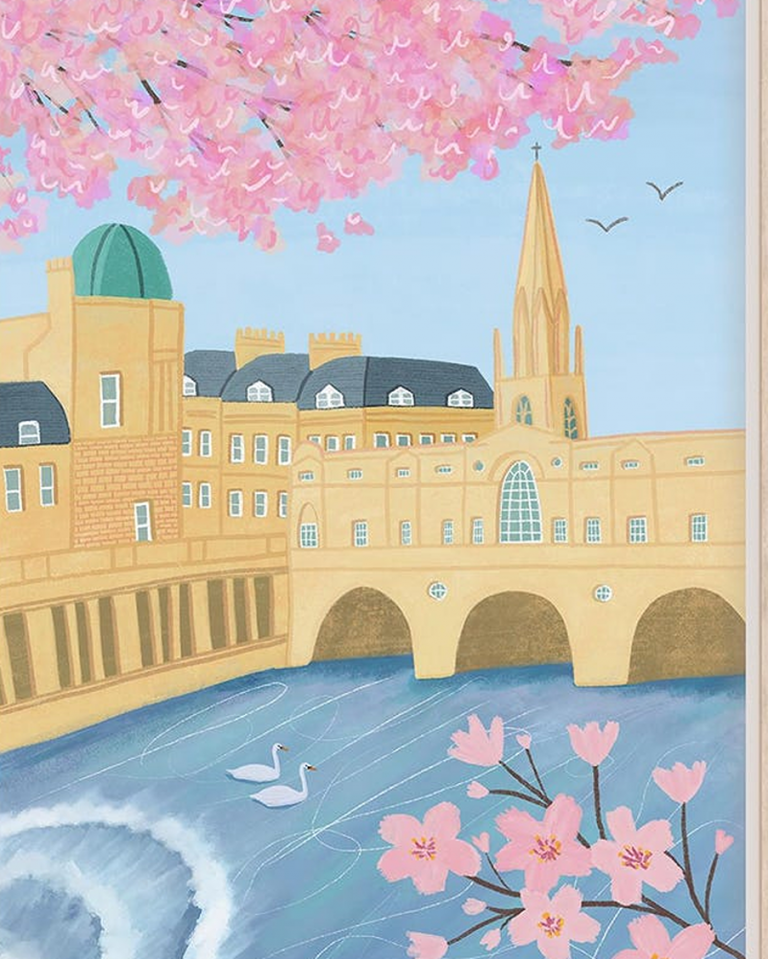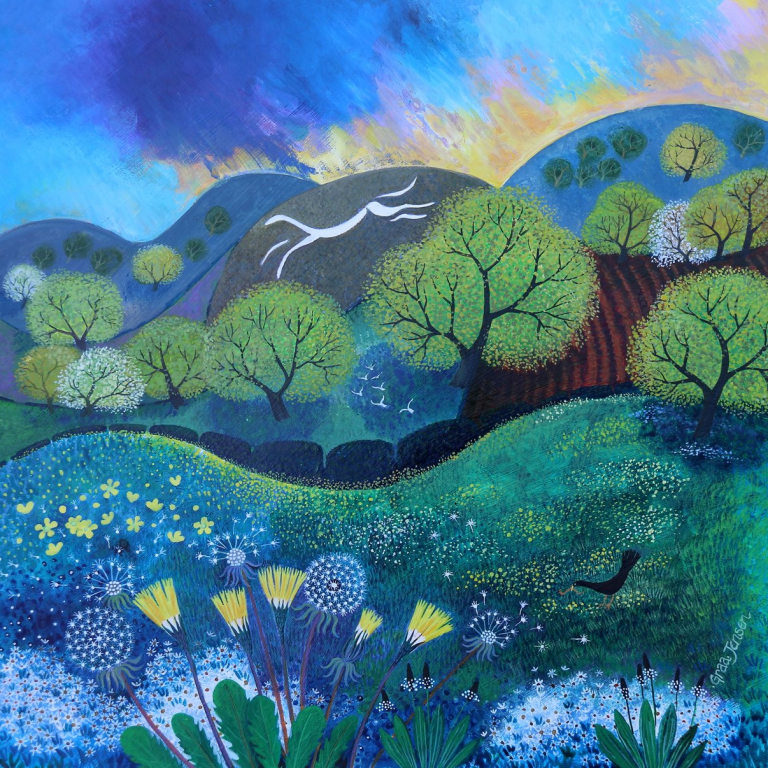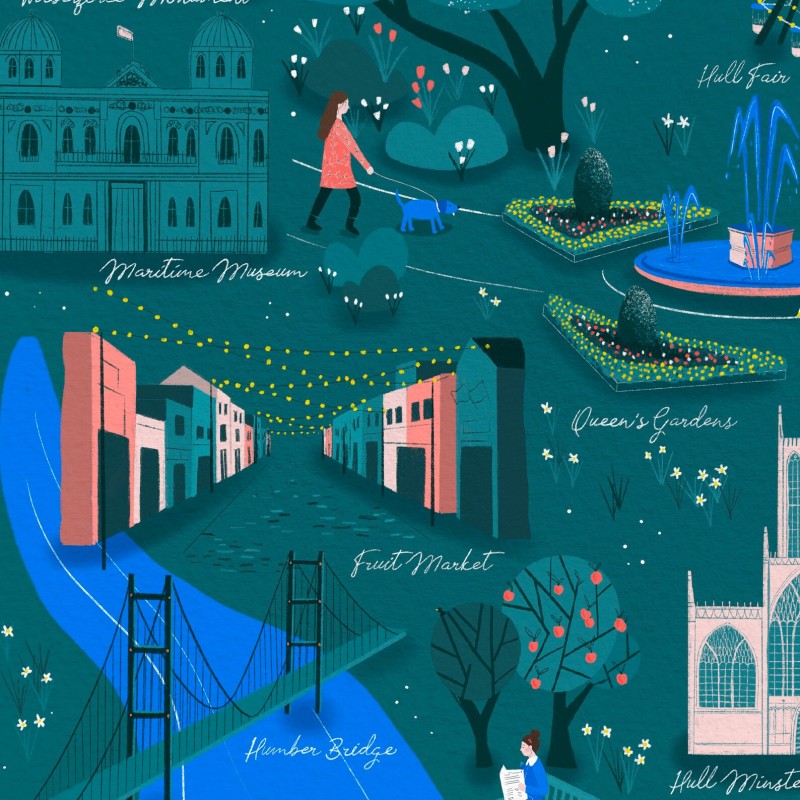
Tucked away on the east coast of Yorkshire, Kingston upon Hull (or just Hull) sits where the River Hull meets the Humber Estuary. This city wears its history with pride and stays true to its roots. Walk around Hull and you’ll see proof of its past, from old docks and warehouses to proud maritime landmarks.
Locals and visitors often call Hull the most poetic city in England, and it’s easy to see why. The area’s creativity runs deep, filling its streets, galleries, and vibrant festivals. Whether you’re drawn by its past or its lively culture, Hull offers a unique welcome you won’t find anywhere else.
If walking in nature, always follow the Countryside Code, to keep dogs and barnyard friends safe. If visiting the nearby coast, read our post on keeping dogs safe by the seaside.
Hull’s Maritime Past and Present
Hull has always felt the pull of the sea. The city grew up where the River Hull pours into the Humber Estuary, tying its destiny to tides, trading ships, and fishing boats. Life in Hull has danced to the rhythm of water for centuries.
Ships carried goods and people in and out of the port, while the river brought life to the busy docks and markets. Today, traces of this close friendship with the sea are everywhere, from the grand old warehouses to the modern bridges and barriers that shape the city.
The River Hull and Humber Estuary
The River Hull slices through the city, feeding into the vast Humber Estuary. This wide waterway acts like a gateway between Hull and the North Sea. Over the centuries, ships from all over the world arrived carrying wool, timber, and coal. The river made Hull a centre for commerce, giving birth to lively docks and working-class neighbourhoods.
The Humber Estuary itself sets Hull apart. Stretching out towards the North Sea, it opens up trade routes and brings a salty tang to the air. The mix of river and tide shaped Hull’s layout, carving out old docks that you can still spot today.
Engineering Icons: Humber Bridge and Tidal Surge Barrier
Hull’s link to the wider world isn’t just about trading routes. Two modern feats of engineering show how the city adapts. First, the Humber Bridge. Spanning the estuary, it was once the world’s longest single-span suspension bridge. It connects Hull to the south bank and stands as a symbol of connection and progress.
Then there is the Hull Tidal Surge Barrier, guarding the city from flooding during harsh North Sea storms. The barrier swings down when floodwaters threaten, a silent guardian that shows how Hull still bows to the tide but doesn’t let it win.
The North Sea’s Ever-Present Influence
Living in Hull means living with the sea. Strong winds, big skies, and salty air sweep through the city, carrying with them stories from across the water. The North Sea shapes the climate and influences the way people talk and work. It brings both challenge and opportunity, making Hull a place that endures and adapts.
Many in Hull still feel a deep respect for the sea. The North Sea’s presence lingers, part of daily life and the city’s stubborn spirit.
A City Without a Cathedral
Walk around Hull’s old town and you will spot three grand parish churches: Holy Trinity (now Hull Minster), St Mary’s, and St Charles Borromeo. Each one boasts old stone walls, peaceful graveyards, and stained glass windows. But here’s the thing: Hull does not have a cathedral.
Most big English cities have one, but Hull missed out. In medieval times, only bishopric towns received cathedrals, and Hull never got picked. Locals say this fuels a sense of independent spirit. Some even joke that Hull is a “city without permission,” always playing by its own rules. This catches many outsiders by surprise, especially when standing inside the vast Hull Minster, which looks like a cathedral in everything but name.
These churches anchor Hull’s skyline. Residents treat them like cathedrals anyway, holding concerts, weddings, markets, and quiet moments inside their walls. They give Hull its own sense of pride, reminding everyone that tradition here comes with a twist.
William Wilberforce and Hull’s Historic Heart
Hull’s most famous son, William Wilberforce, started life on the city’s old cobbles. Born in a humble house on High Street (now the Wilberforce House Museum), Wilberforce pushed Parliament to end the slave trade. Few people from small port towns change the whole world, but he did.
Wilberforce fought for decades, moved by faith and a belief in justice. He faced down the powerful, lost friends, and even risked his health to see the slave trade banned with the 1807 act. Today, you can walk through his home and see the desk where he wrote speeches that changed history.
Hull’s Creative and Music Scene
Hull has a creative thread that runs through just about everything. It is not a city that shouts about its talent, but spend any time here and you will quickly spot the signs. The city’s energy pours out in music, poetry, art, and a stubborn drive to do things its own way.
Look at Everything But the Girl, who formed in Hull in the early 1980s. Tracey Thorn and Ben Watt met at university and soon tasted national success. Their sound mixed pop, jazz, and a hint of electronic music, and “Missing” became an international hit. It all started in Hull.
Another band tied to the city is The Housemartins. These lads wrote catchy, sharp songs that made people think as well as dance. Paul Heaton, the band’s leader, brought the grit of Hull’s working-class streets into his lyrics. Later, he found more fame with The Beautiful South, still tipping his hat to his Hull roots.
Even Sade, known for her laid-back soul and hits like “Smooth Operator”, spent time in Hull as a student. It might surprise people that the calm, stylish sound she’s loved for started to form in Hull’s creative mix.
Live music always had a place here too, with small venues supporting acts before they made it big. Hull keeps its door open for up-and-comers alongside those with household names.
A City of Poets and Artists
Music is just the start. Hull is known for its poets and writers as much as anything else. Philip Larkin worked as the University Librarian for three decades, writing much of his famous work overlooking Hull’s streets.
His poems catch the city’s everyday beauty and plain honesty, and locals are proud to claim him as their own. The Larkin Trail lets you walk the city in his footsteps, stopping at spots he loved and wrote about.
Poetry is everywhere in Hull, from plaques and public readings to street art quoting local wordsmiths. The city even won the UK City of Culture title in 2017, thanks largely to its deep creative roots.
Artists find inspiration in Hull’s old warehouses, river views, and changing skies. Independent galleries and community art spaces dot the city centre, showing off work from new and known names. Murals often appear overnight, bringing bold splashes of paint to alley walls and shopfronts.
Conclusion
Hull’s stubborn mix of old traditions and fresh ideas makes it a place you remember. History runs in its veins, clashing corners with creativity and honest pride. You can feel the past in the old docks and city churches, yet the energy from poets, artists, and bands proves Hull never stands still.
To really get Hull, you have to see it for yourself or chat with someone who calls it home. Its story is still being written, and there’s always more to find. Thanks for reading—if Hull has sparked your interest, why not plan a visit or dig deeper into its local stories online?


